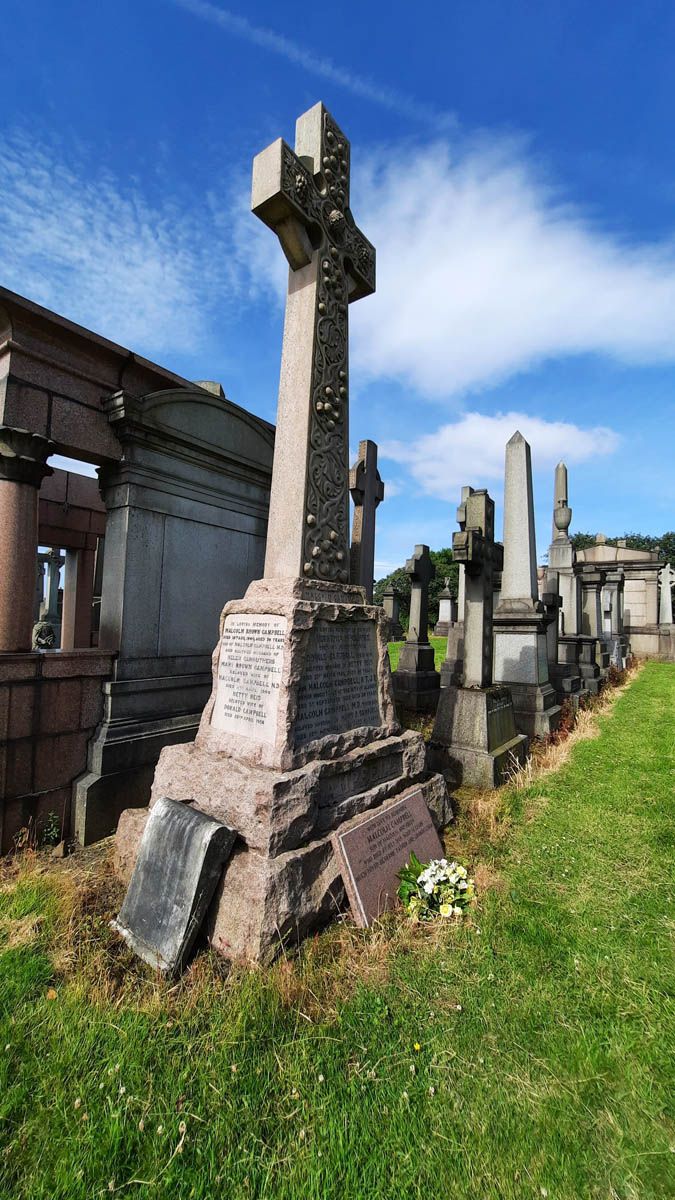Rank
Sub Lieutenant
Regiment
Royal Naval Volunteer Reserve
Military Service
Served at HMS Orlando, a shore facility located in Navy House, Greenock, Headquarters Flag Officer Clyde, also an associated Naval gunnery school
Death
12th August 1940
Circumstances of death
Died at Shandon Hospital, Rhu
Age
36
Burial
Glasgow Necropolis
Parents
Malcolm Campbell and Mary Brown Campbell (nee Campbell)
Spouse
Helen Munro Campbell (nee Carruthers)
Home Address
Windyridge, Methven Rd, Whitecraigs. Renfrewshire
Glasgow Necropolis
Compartment
Zeta Lair 124
Acknowledgements and Sources
Acknowledgments and Sources
Much of the information on which this profile is based is drawn from various internet sources which are listed below. The Friends of Glasgow Necropolis also wish to make full acknowledgement and thanks for the permitted use of any information or images generously supplied specifically for exhibition, publication or display in connection with The Roll of Honour and accompanying profiles to Ancestry, and Find my past.
Commonwealth War Graves Commission
Family Search
Scotlands People
Rank
Sub Lieutenant
Regiment
Royal Naval Volunteer Reserve
Military Service
Served at HMS Orlando, a shore facility located in Navy House, Greenock, Headquarters Flag Officer Clyde, also an associated Naval gunnery school
Death
12th August 1940
Circumstances of Death
Died at Shandon Hospital, Rhu
Age
36
Burial
Glasgow Necropolis
Buried on 14th August 1940
Parents
Malcolm Campbell and Mary Brown Campbell (nee Campbell)
Spouse
Helen Munro Campbell (nee Carruthers)
Home Address
Windyridge, Methven Rd, Whitecraigs. Renfrewshire
Glasgow Necropolis
Lair 124
Acknowledgements and Sources
Acknowledgments and Sources
Much of the information on which this profile is based is drawn from various internet sources which are listed below. The Friends of Glasgow Necropolis also wish to make full acknowledgement and thanks for the permitted use of any information or images generously supplied specifically for exhibition, publication or display in connection with The Roll of Honour and accompanying profiles to Ancestry, and Find my past.
Commonwealth War Graves Commission
Family Search
Scotlands People
Credits
Compiled by Morag Fyfe, Historical and Genealogical Researcher for The Friends of Glasgow Necropolis.

